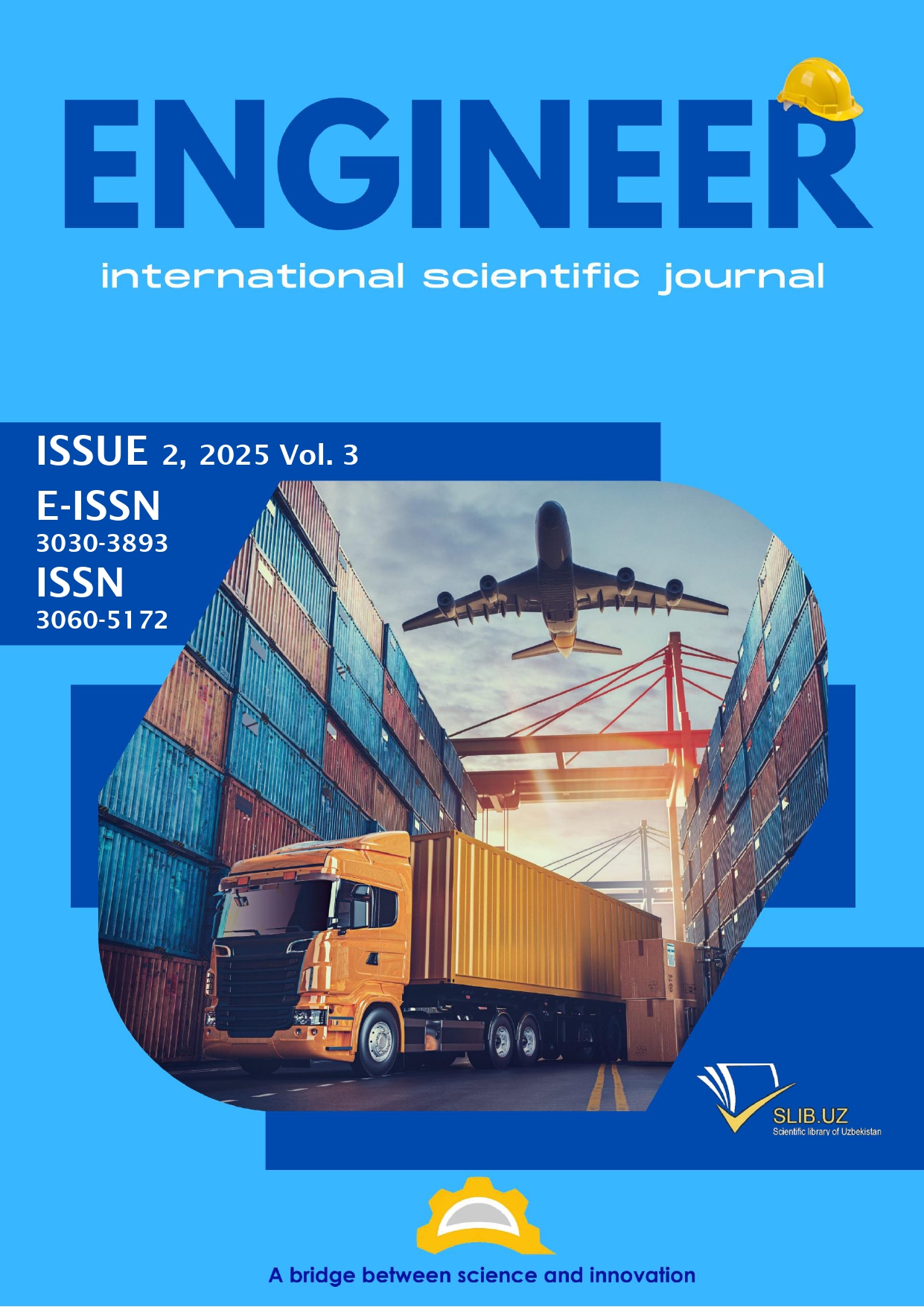The impact of traffic intensity and the share of heavy vehicles on air pollution levels on multi-lane urban streets
Аннотация
This study presents the results of field measurements of pollutant concentrations—carbon monoxide (CO), nitric oxide (NO), nitrogen dioxide (NO₂), and sulfur dioxide (SO₂)—conducted on straight segments of urban streets in Tashkent with varying numbers of lanes (4, 6, and 8 lanes). The measurements were carried out in the spring of 2025 under favorable weather conditions, ensuring consistent data collection across multiple locations. Particular attention was given to the impact of total traffic intensity and the proportion of heavy vehicles (trucks) within the traffic flow. The results indicate a strong positive correlation between both traffic intensity and truck share with pollutant concentrations. As the number of vehicles per hour increases, especially with a higher share of heavy-duty vehicles, the concentrations of pollutants, particularly NO and NO₂, rise significantly—often exceeding national and international air quality standards. CO and SO₂ showed more moderate trends, with exceedances observed mainly under high-intensity and high truck-share conditions. These findings emphasize the disproportionate contribution of heavy vehicles to urban air pollution. The results can serve as a scientific basis for urban environmental planning and the development of traffic management strategies that aim to reduce emissions—such as limiting heavy vehicle access during peak hours or implementing green buffer zones. Overall, the study contributes to a more nuanced understanding of traffic-related emissions in densely populated urban areas and provides evidence for policymakers seeking to balance mobility and environmental sustainability.
Литература
[2] Brunekreef, B., Janssen, N. A., de Hartog, J., Harssema, H., Knape, M., & van Vliet, P. (1997). Air pollution from truck traffic and lung function in children living near motorways. Epidemiology, 8(3), 298-303.
[3] Zhang, Y., Ye, X., Wang, S., He, X., Dong, L., Zhang, N., ... & Xiao, Y. (2021). Large-eddy simulation of traffic-related air pollution at a very high resolution in a mega-city: evaluation against mobile sensors and insights for influencing factors. Atmospheric Chemistry and Physics, 21(4), 2917-2929.
[4] He, J., Wu, L., Mao, H., Liu, H., Jing, B., Yu, Y., ... & Liu, X. (2016). Development of a vehicle emission inventory with high temporal–spatial resolution based on NRT traffic data and its impact on air pollution in Beijing–Part 2: Impact of vehicle emission on urban air quality. Atmospheric Chemistry and Physics, 16(5), 3171-3184.
[5] Lena, T. S., Ochieng, V., Carter, M., Holguín-Veras, J., & Kinney, P. L. (2002). Elemental carbon and PM (2.5) levels in an urban community heavily impacted by truck traffic. Environmental Health Perspectives, 110(10), 1009-1015.
[6] Liu, S., Li, H., Kun, W., Zhang, Z., & Wu, H. (2022). How do transportation influencing factors affect air pollutants from vehicles in China? Evidence from threshold effect. Sustainability, 14(15), 9402.
[7] Weichenthal, S., Van Ryswyk, K., Kulka, R., Sun, L., Wallace, L., & Joseph, L. (2015). In-vehicle exposures to particulate air pollution in Canadian metropolitan areas: the urban transportation exposure study. Environmental science & technology, 49(1), 597-605.





